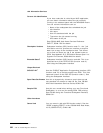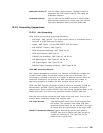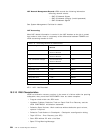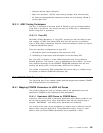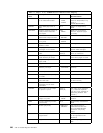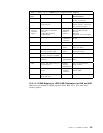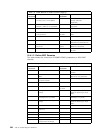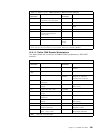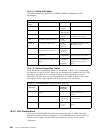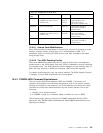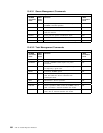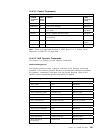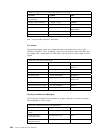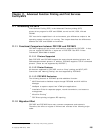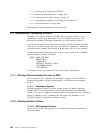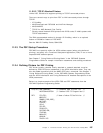
10.4.1.5 Define NJE Nodes
This table shows the conversion of POWER PNODE parameters to JES2
parameters.
Table 21. PNODE MACRO to JES2 Parameter Mapping
PNODE
Parm
Description JES2 Parm Comment
NODE= Name of the NJE node NODE
NAME=
LOCAL This is the local node. NJEDEF
OWNNODE=
APPLID VTAM Appl-ID APPL(name)
NODE=
Defaults to node name. (Use
LOGONn for local node)
AUTH Command authorization level NODE
AUTH=
BUFSIZE Transmission buffer size TPDEF
xxxBUF=
(SIZE=
BELOWBUF for BSC or CTC
EXTBUF for SNA
MAXBUF Number of buffers for
transmitters & Receivers
TPDEF
xxxBUF=
(LIMIT=
(shared between RJE & NJE)
PWD Send or Receive signon
password
NODE
PASSWORD
Send=pwd for local node
Verify=pwd for other nodes
ROUTE1 Indirect link if using
store-and-forward (BSC, CTC
only)
NODE
SUBNET=
-or-
CONNECT
(use dynamic path
management, or CONNECT
statements and operator
cmds)
10.4.1.6 Define Compaction Tables
Up to 99 different compaction tables can be defined in JES2. They can be used
by SNA RJE or NJE. For RJE, these can be referenced by individual OUTPUT JCL
statement, specified on an individual Remote or Remote Printer or Punch
statement. For NJE, they can only be specified on a NODE or APPL basis. (Use
these with caution; they may take more cycles than they are worth.)
Table 22. PCPTAB MACRO to JES2 Parameter Mapping
PCPTAB
Parameter
Description JES2
COMPACT
Parameter
Comment
name Name of the Compaction
Table
NAME Compaction tables can be
referenced by name or
number.
MASTER 3 to 16 master characters CHAR=
(nm,m1,m2,
...mn,
Number of master chars and
n master chars
NOMASTn Non-master characters CHAR=
(...nm1,
...nmx)
Remainder are non-master
chars
10.4.2 Exit Comparisons
Here are the VSE/POWER exits and their equivalent exits in JES2. The major
difference between the two subsystems, is that POWER allows you to scan and
alter the source data, whereas JES2 only gives you access to the header
information.
230 VSE to OS/390 Migration Workbook



